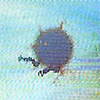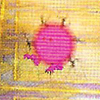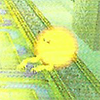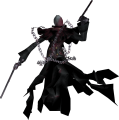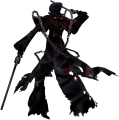Shadow
| This page is a stub. You can help Megami Tensei Wiki by expanding it. | |
| No reason provided. |
| This article is in need of image(s). You can help Megami Tensei Wiki by uploading one. | |
| Reason: Needs images for p4 and all of the various overworld shadow designs in p5 |
A Shadow is a concept in the Persona series. Shadows are the counterpart of Personas, created from human emotions. Sometimes a person's Shadow can appear, which are twisted manifestations of ones thoughts or feelings in the form of a facsimile to the original person.
Profile
Origin
Shadows are derived from Jungian psychology.
Design
Gameplay
Shadows are the typical enemy in Persona series, except in Megami Ibunroku Persona and the Persona 2 duology, which instead feature demons. In Persona 3, Persona 4, and their various spinoff games, Shadows are all original designs that are not similar to demons, having a mask motif.![]() Persona 3
Persona 3
Persona 4
Persona 3 FES
Persona 3 Portable
Persona Q: Shadow of the Labyrinth
Persona Q2: New Cinema Labyrinth
Persona 4: Dancing All Night
When battling against these Shadows, they take a form inspired by the arcana that the number on their masks correlate to. In Persona 5, Shadows manifest similarly to Shadows as they appear in other games, but upon starting a battle their true form as a demon is revealed.
- For a list of Shadows in Persona 3 and its remakes, visit Shadows in Persona 3.
- For a list of Shadows in Persona 4, visit Shadows in Persona 4.
- For a list of Shadows in Persona 4 Golden, visit Shadows in Persona 4 Golden.
- For a list of Shadows in Persona Q: Shadow of the Labyrinth, visit Shadows in Persona Q: Shadow of the Labyrinth.
- For a list of Shadows in Persona Q2: New Cinema Labyrinth, visit Shadows in Persona Q2: New Cinema Labyrinth.
Overworld Properties
Standard Shadow
The most common Shadow to encounter. In Persona 3 and Persona 4, its size depends on how many in-battle Shadows it contains, with less in-battle Shadows resulting in a smaller overworld model and vice versa. If the player is at a much greater level than the in-battle Shadows, the overworld Shadow will flee. In Persona 3, it has a detection radius of 270° around its body, with a blind spot on its backside. In Persona 4, there are both floating Shadows and ground Shadows. Floating Shadows move slower than ground Shadows, but pursue the party for longer. In Persona 4 Golden, all of the the floating Shadows were removed.
-
Overworld model from Persona 3, Persona 3 FES, and Persona 3 Portable.
-
Overworld model from Persona 3 Reload.
-
Floating overworld render from Persona 4.
-
Overworld model from Persona 4 Golden.
Strong Shadow
Shadows containing extremely powerful enemies. It glows bright red and contains in-battle Shadows that are found within standard overworld Shadows on later floors of whatever dungeon it's found in. Like the standard Shadow, in Persona 3 it has a detection radius of 270° around its body, with a blind spot on its backside.
-
Overworld model from Persona 3, Persona 3 FES, and Persona 3 Portable.
-
Overworld model from Persona 3 Reload.
-
Floating overworld render from Persona 4.
-
Overworld model from Persona 4 Golden.
Rare Shadow
Shadows that contain rare enemies such as Wealth Hand or Opulent Hand in Persona 3 or Persona 4, and Treasure Demons in Persona 5. In Persona 3, they are represented with a small standard Shadow model colored gold, in Persona 4 they are represented with a Wealth Hand, and in Persona 5 they are represented with a glowing gem. In Persona 3 and Persona 4, these shadows will always flee from the player when approached. In Persona 5, their gems will remain stationary and must be interacted with to begin battle. In Persona 3, it has a detection radius of 300° around its body, with a blind spot on its backside.
-
Overworld model from Persona 3, Persona 3 FES, and Persona 3 Portable.
-
Overworld model from Persona 3 Reload.
-
Floating overworld render from Persona 4.
-
Overworld model from Persona 4 Golden.
The Reaper
- Main article: The Reaper
The most powerful Shadow. In Persona 3 and Persona 5, The Reaper will appear after the player has spent too much time on any one floor of Tartarus or Mementos. In Persona 3, it has a detection radius of 360° around its body, with no blind spots. It will always chase after the player once it spawns, and will only disappear if the player moves to a new floor of Tartarus or Mementos.
-
The Reaper's overworld model from Persona 3, Persona 3 FES, and Persona 3 Portable.
-
The Reaper's overworld model from Persona 3 Reload.
-
The Reaper's overworld model from Persona 5 and Persona 5 Royal.
F.O.E.
- Main article: F.O.E.
Exclusive to Persona Q: Shadow of the Labyrinth and Persona Q2: New Cinema Labyrinth, F.O.E.s are a type of powerful Shadow that patrol a set path in their designated Labyrinths. Each F.O.E. is represented with a unique overworld model. They are the only type of Shadow to appear in the overworld in the Persona Q duology.
Game Appearances
Persona 2: Innocent Sin
While standard enemy Shadows do not appear, Shadows of the playable party members do appear.
Persona 2: Eternal Punishment
While standard enemy Shadows do not appear, Shadows of the playable party members do appear.
Persona 3
Persona 4
In Persona 4, Shadows are beings that appear exclusively in the TV World. There, they are being subconsciously suppressed and do not interact with the real world.[1] Shadows take the form of black blob-like beings that wear a mask associated with an arcana, ranging from 0 to XII. When fought in battle, they take a more concrete form that takes inspiration from their arcana. By default, Shadows are hostile towards Persona users, but ignore the regular humans who have fallen into the TV. When the fog clears in the TV World, or when humans show a longing for the truth, the Shadows will lash out and attack even normal people.[2][3]
In addition to the smaller black Shadows, humans in the TV World encounter their own Shadows. Similar to the Jungian definition, the Persona 4 Shadows that come from humans are born from a repressed part of that person's heart, but also present alternate possibilities for who they could be.[4] After each member of the Investigation Team accepts their own Shadow, the Shadow transforms into their Persona and becomes a power they can wield in the TV World.
While many Shadow designs in Persona 4 are reused from Persona 3, there are some designs new to Persona 4 which were influenced by people in Inaba. When they tune in to watch the Midnight Channel due to the rumor, their thoughts flow into the TV World, and this influences the appearance of the Shadows that the Investigation Team encounters. For example, the nyogo court lady Shadows, such as the Blossom Nyogo, were influenced by lovers of historical period dramas watching the Midnight Channel.[5] And the robot-looking machine Shadows, such as the Steel Machine, were influenced by mecha anime fans watching the Midnight Channel.[6]
Persona 5
Nomenclature
| Language | Name | Meaning |
|---|---|---|
| シャドウ Shadō | Shadow | |
| 暗影 Ànyǐng | Shadow | |
| 陰影 Yīnyǐng | Shadow | |
| Ombre | Shadow | |
| Schatten | Shadow | |
| Ombra | Shadow | |
| 섀도 Syaedo | Shadow | |
| Cień | Shadow | |
| Sombra | Shadow | |
| Тень Tenʼ | Shadow | |
| Sombra | Shadow | |
| Gölge | Shadow |
References
- ↑ Persona Club P4. p. 188.
- ↑ "Teddie: Well, you need to get your strength back! Then you can tell her! Yuki-chan's normal. The Shadows don't attack normal people. They only attack when the fog lifts here." Persona 4.
- ↑ "Amenosagiri: Still, humans fear what they cannot see. That brief yearning for truth becomes a ray of light which breaks the fog and torments the Shadows..." Persona 4.
- ↑ Persona 4 Golden Premium Fan Book. Japanese. p. 200.
- ↑ "Chapter 5: Setting", Persona Club P4, Atlus. Published by Famitsu (2009). Japanese. p. 191. ISBN-13: 475774630X.
- ↑ "Chapter 5: Setting", Persona Club P4, Atlus. Published by Famitsu (2009). Japanese. p. 193. ISBN-13: 475774630X.

